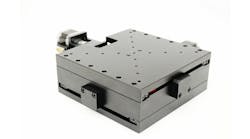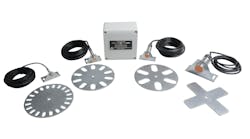Hook Studios features the industry's most advanced accessories for classic and contemporary microphones. “The Hook” offers pop filters, stand decouplers, and more to aid in micing vocals, guitars, drums, and all instruments. Hook caters to engineers in both recording and live sound production whose projects demand the highest standards.
Having been involved in music and audio most of his life, Mike Frenchik started playing saxophone in grade school and continued his studies all the way through completing a Master's Degree in music from Duquesne University. Always striving for the best sound, Mike moved to California and has spent over 35 years in a multi-faceted career in the music and recording industry.
Recording engineers, artists, producers, and songwriters have always tried to achieve the best recording sound possible in their current environment. In some cases a single microphone on a single source, or multiple microphones on many sources such as drums, ensembles, and choirs.
For example, a drum kit in a recording studio can have 8+ microphones. Very directional mics are used with very tight (hyper-cardioid) patterns. All this activity also creates unwanted sounds. Shaking noises and stage floor vibrations are two examples.
Hook needed to reduce vibration affecting microphones in order to obtain more clarity of recorded sources, whether at the studio, on location or during live recordings. Being able to reduce the vibration on the microphone would create better clarity in the recorded sound. So, Hook Studios reached out to Sorbothane for help.
Challenge
In each case, the question remained as to how to record the best individual sound as cumulative bad-sounding elements add up.
The use of acoustic sound dividers and portable padded wall systems will address certain issues but that still leaves the issue of cumulative noise vibration (i.e. floor sounds transferring via the stands) that will shake a microphone and its capsule.
Existing Microphone Decoupler/Isolation Mount
Conventional microphone holder clips are normally comprised of an ABS plastic and a metal threaded insert.
The suspension mounts are meant to work with only "one" specific microphone. Current suspension mounts are a complex design of a frame and stretch cords that are fitted onto the frame in order to suspend and isolate the microphone.
Solution
The idea here was to design and build a "universal decoupler mechanical isolator microphone mount" that would be attached directly between the microphone and the microphone stand using standard threads.
The mount would have a separate soft center section between the male mount and the female connector in order to physically separate metal-to-metal and decouple a microphone from the microphone stand.
Initially, hard rubber, drum cymbal felt, and sand-filled units were tested. As a result, a simple three-piece design was developed.
This design consists of a male threaded aluminum round outer plate, rubber or drum cymbal felt compression center, and a female threaded aluminum round outer plate—all connected with a single centered nylon screw.
Testing
During the development and testing process, research revealed shock-absorbing insoles made of viscoelastic Sorbothane.
This discovery led to the use of Sorbothane washers for the "compression center member" and also spawned the idea to sew the three pieces together with Kevlar thread.
Kevlar thread sewn around the perimeter demonstrated better stabilization and overall strength for heavier microphones. Working with the Sorbothane engineering department, custom components were designed to handle different microphones.
The Hook Microphone Decoupler has been thoroughly field-tested by independent audio engineers over a two-year period. These tests revealed a marked reduction in "metallic" strike type impact sounds, as well as a reduction in vibration and unwanted floor noise.
In addition, the decoupler may be used with an existing suspension mount to reduce vibration even further.
Critical studio listening tests using the MMD reveal increased clarity of the recorded source, especially with loud guitar cabinets. Considerable vibration of stands and hardware typically occurs in such situations, interfering with accurate harmonic overtone reproduction of the intended source. The MMD provides this decoupled suspension and vibration absorption regardless of the microphone's direction or angle.
Final Results
The patent-pending microphone mount mechanically decouples microphones successfully from the direct contact between the microphone holder assembly and the microphone stand. Thus, it reduces unwanted vibration, resulting in clarity of sound. The Hook Studios Mechanical Microphone Decoupler is easy to use and universally compatible with most OEM microphone clip holders and mounts that use standard 5/8"- 27 threads.












